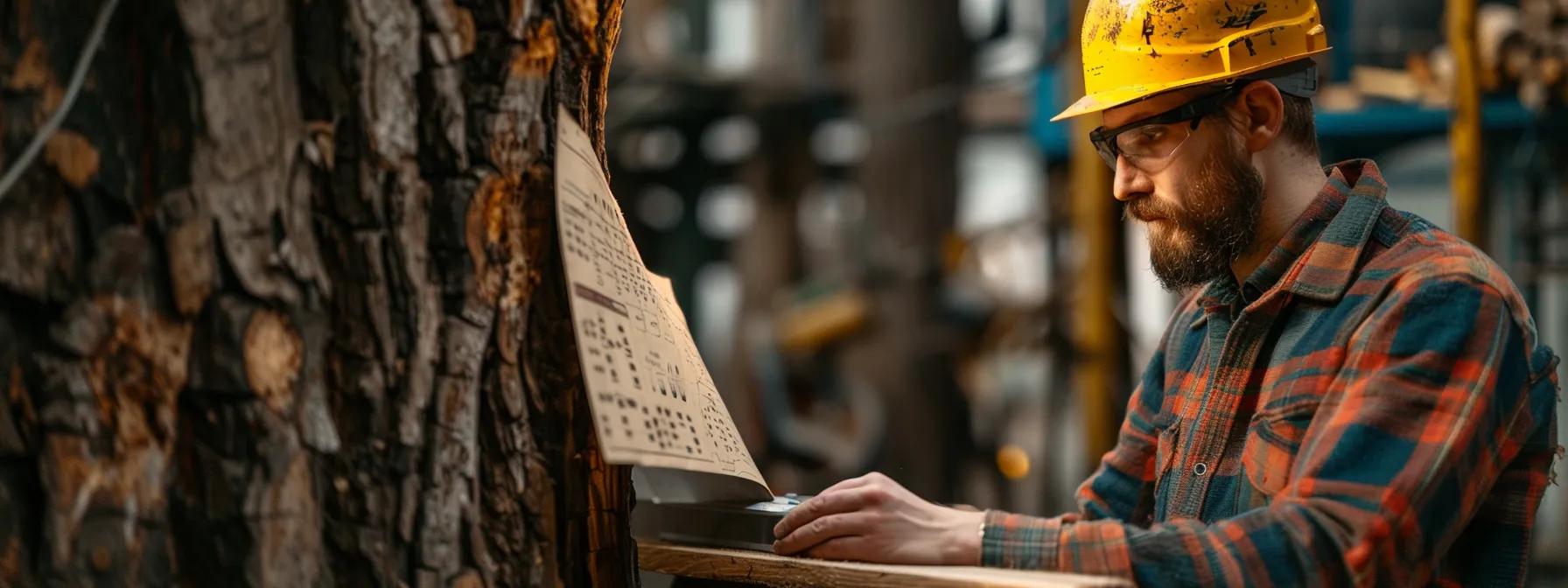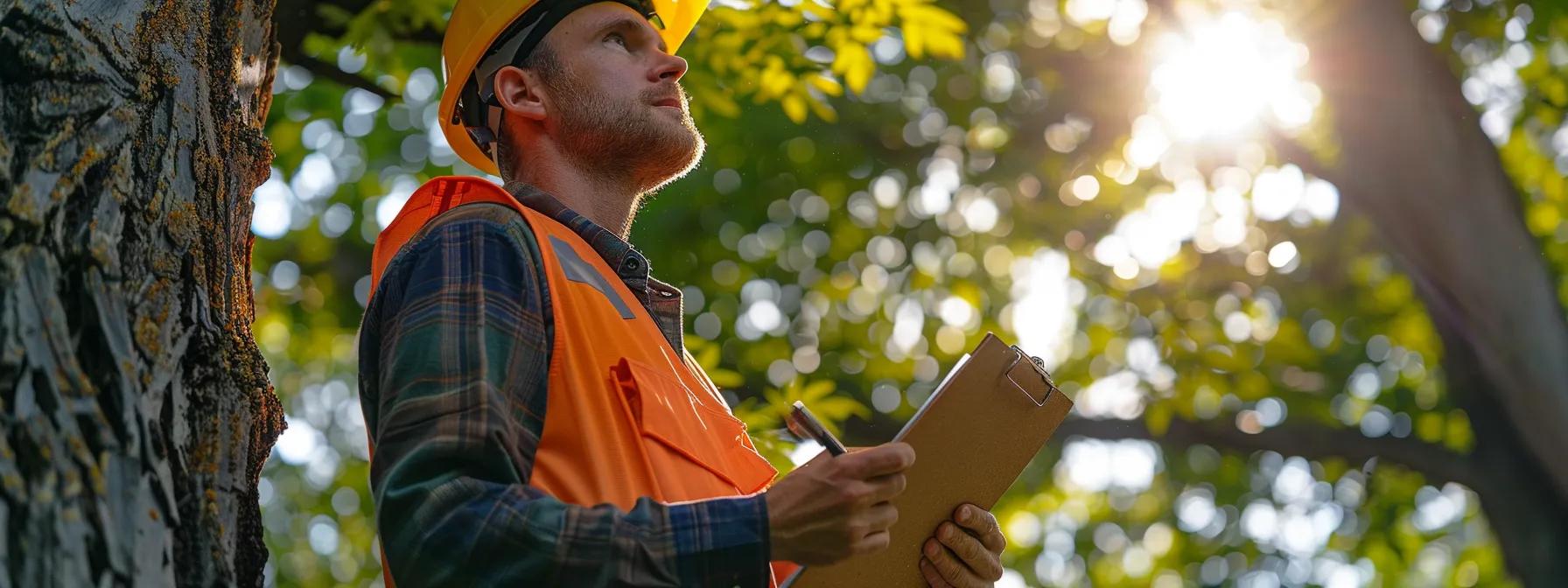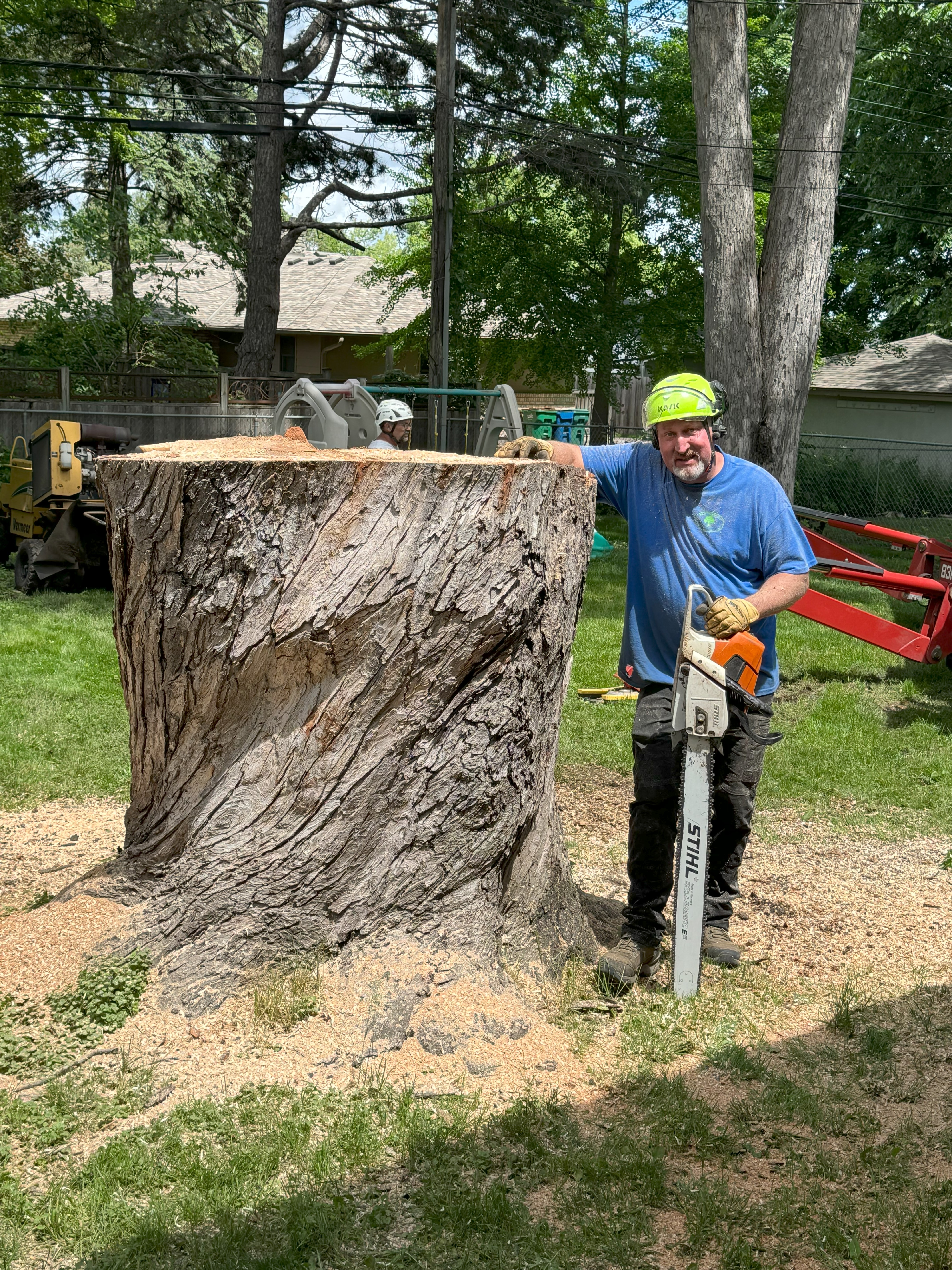
Valuable Arbor Care Tips Ensuring Healthy Trees Thrive
5 Essential Arbor Care Tips to Ensure Your Trees Thrive With Expert Arbor Tree Care
Trees are a cornerstone of beautiful landscapes and healthy environments. To keep them healthy, structurally sound, and attractive, proper arbor care is essential. Homeowners and property managers face challenges such as tree diseases, pest infestations, improper pruning, and seasonal stresses. Expert tree arbor tree care not only prolongs tree life but also protects property, enhances curb appeal, and benefits the ecosystem. This article provides key insights into vital arbor care practices, managing tree diseases and pests, seasonal care tips, and the essential tools and techniques for long-term tree health. Property owners in Central Minnesota and the northern Twin Cities metro area can use these guidelines to ensure their trees thrive year-round.
What Are the Most Important Arbor Care Practices for Healthy Trees?
Healthy trees require consistent care to address both immediate issues and long-term growth. The main practices include proper pruning, regular health assessments, and
. These practices ensure solid structure, disease detection, and a strong foundation for growth.
How Does Proper Tree Pruning Improve Tree Health and Growth?
Tree pruning removes dead, diseased, or overgrown branches that reduce energy efficiency. A master arborist redirects nutrients to healthier parts by selectively cutting branches. Regulated pruning practices, recommended by the International Society of Arboriculture (ISA), can boost canopy density by up to 25% in well-maintained trees while reducing the hazard of falling limbs. Techniques such as thinning, crown reduction, and deadwood removal balance tree structure, improve light penetration for photosynthesis, and enhance air circulation to lower pest control risk. Overall, proper pruning fosters robust growth and long-term tree resilience.
Why Is Regular Tree Health Assessment Crucial for Thriving Trees?
Routine tree health assessments help detect diseases, pest invasions, or nutrient deficiencies early. Certified arborists examine trunks, branches, leaves, and roots for signs like unusual discoloration, vascular bleeding, or abnormal growth. This documented baseline enables monitoring of changes over time. Techniques like resistograph testing or sonic tomography can reveal hidden decay or structural weaknesses. Early detection allows for timely interventions—such as targeted pest control for emerald ash borer infestations—that preserve tree integrity and reduce long-term repair costs. Regular assessments also guide decisions on cabling, bracing, nutrient supplementation, or even removal when necessary.
How Does Tree Planting Affect Long-Term Tree Success?
Proper tree planting is the cornerstone of a sustainable landscape. It ensures that new trees develop a strong root system and adapt to local climate conditions. When trees are planted in optimal locations with the right soil nutrients, sunlight, and watering practices, they have higher survival rates and vigorous growth. The international society of arboriculture recommends selecting native species and planting during the dormant season to improve establishment success by over 30%. Minimizing root disturbance and promoting soil aeration using proper hole dimensions and organic amendments are essential. Subsequent care like mulching and regular watering further supports growth, making tree planting a sound long-term investment that enhances property value and landscape beauty.
How Can You Identify and Manage Common Tree Diseases and Pests?
Early detection and effective control of tree diseases and pests are essential to maintain tree health. Integrated Pest Management (IPM) combines cultural, biological, and chemical controls to reduce hazards while minimizing environmental impact. Vigilance in monitoring symptoms and pest activity allows property owners to implement targeted interventions that extend a tree’s lifespan.

What Are the Signs of Common Tree Diseases to Watch For?
Visible symptoms such as discolored leaves, cankers, resin flows, premature leaf drop, abnormal sap exudation, and bark discoloration signal possible disease. Fungal infections might cause leaf blight while bacterial diseases can lead to oozing wounds and dieback. Recognizing these symptoms early is crucial to prevent pathogen spread. For diseases like Dutch elm disease and oak wilt, immediate isolation and tailored treatment plans are required. Diagnostic tools, including laboratory tests for soil pathogens, support accurate identification. Consistent changes across multiple trees often indicate an outbreak that requires expert tree consultation.
How Do You Control Tree Pests Effectively and Safely?
Effective pest control integrates monitoring, cultural practices, and targeted treatments. Certified arborists may use mechanical removal, biological controls like natural predators, and, when necessary, carefully selected pesticide applications to manage pests such as aphids, borers, and scales. Techniques like pheromone traps help track pest control levels, and timing treatments to the pest life cycle increases efficacy while reducing chemical use. Additionally, proper pruning and irrigation improve overall tree vigor, indirectly reducing pest susceptibility. It is essential that any chemical treatments are approved for tree care and applied by professionals to ensure safety for both residents and wildlife.
When Should You Consult an Arborist for Disease or Pest Issues?
If disease or pest symptoms persist despite initial steps—such as widespread leaf discoloration, significant branch dieback, or invasive pest presence—it is critical to consult a certified arborist immediately. Their specialized knowledge and diagnostic tools enable the formulation of a comprehensive management plan, which may include soil analysis, trunk evaluation, and recommendations for cabling, bracing, or selective tree removal. An ongoing monitoring program can also be established to proactively prevent recurrence and guide future
.
What Are the Best Seasonal Tips for Arbor Care in Your Local Climate?
Arbor care must adapt to seasonal changes to keep trees healthy. Specific seasonal strategies help trees handle shifts in temperature, moisture, and other climatic stresses. Tailoring care to each season maintains trees’ productive and aesthetic qualities throughout the year.
How Does Seasonal Weather Affect Tree Care Needs?
Each season brings unique challenges. In spring, rising temperatures and increased rainfall stimulate growth, making it an ideal time for pruning away winter damage and encouraging new branches. Summer brings heat and drought, which require efficient irrigation and mulching to preserve soil moisture. In fall, reducing canopy density through light pruning helps prepare trees for winter and minimizes pest infestations. Winter care focuses on protecting trees from freezing temperatures and heavy snow loads, sometimes with additional bracing or cabling. Monitoring local weather patterns and understanding tree care effects are crucial for planning seasonal care activities.
What Are the Recommended Seasonal Pruning and Watering Practices?
Seasonal adjustments in pruning and watering are vital. In spring, selective pruning removes winter-damaged limbs to promote balanced growth. During summer, pruning may reduce excess growth to minimize water loss, while deep watering combats dry conditions—studies show that adequate watering can improve tree survival by about 20%. Mulching throughout the year helps spare moisture, stabilize tree care temperature, and suppress weeds. In fall, a lighter pruning schedule addresses storm damage without overly disturbing the tree before winter. Winter watering might be necessary for newly planted trees or during unexpected dry spells. Following a seasonal checklist helps ensure that care practices align with the tree’s physiological needs.
How Do Local Regulations Influence Tree Care Activities?
Local regulations set by municipalities and organizations such as the International Society of Arboriculture help protect public safety, environmental quality, and urban tree canopies. Permits may be required for major interventions like tree removal, heavy pruning, or installing support systems (cabling and bracing). Regulations might also specify pruning timelines to safeguard nesting birds or maintain neighborhood aesthetics. Compliance with these guidelines not only avoids fines but also contributes to a sustainable urban forest. Awareness of local ordinances is essential for planning and executing arbor care activities responsibly.
Which Tools and Equipment Are Essential for Effective Arbor Care?
Having the right tools and equipment is fundamental for safe and effective arbor care. A well-stocked toolkit ensures that tasks such as pruning, pest control, and safety assessments are carried out efficiently.

What Are the Must-Have Tools for Safe and Efficient Tree Pruning?
Key tools include hand pruners, loppers, and pole saws. High-quality pruning shears cleanly cut small branches; loppers offer leverage for larger limbs; and pole saws provide safe access to high branches. For larger cuts, chainsaws equipped with safety features are indispensable. Protective gear such as helmets, eye protection, and chainsaw chaps are also critical. In urban settings, additional equipment for arbor care tree service may be needed to support weakened branches. Regular maintenance, including sharpening and calibration, is necessary to ensure these tools work efficiently and safely.
How Should You Maintain and Use Arbor Care Equipment Properly?
Proper use and upkeep are vital. Regular cleaning, inspection, and repair of equipment prevent malfunctions that could pose hazards. Following manufacturer guidelines for sharpening blades, lubricating parts, and checking protective gear helps extend tool life and maintain performance. Routine safety checks and proper training—such as ergonomic handling practices—reduce the risk of injury. Documenting maintenance schedules and having periodic professional inspections ensure that all equipment remains reliable for each tree care task.
How Can Hiring a Certified Arborist Enhance Your Tree Care Results?
A certified arborist brings expert guidance, advanced diagnostics, and professional interventions tailored to the specific needs of each tree. Their expertise, combined with the latest scientific practices, ensures trees receive the highest standard of care, reducing hazards and promoting longevity.
What Qualifications Should You Look for in a Professional Arborist?
Key qualifications include certification through organizations such as the International Society of Arboriculture (ISA), which signals professional competence. Certified arborists undergo rigorous training and continuous education to stay updated on best practices. Look for experience in handling local tree species and proficiency with specialized tools. Customer testimonials, a proven track record, and knowledge of local regulations further verify their reliability. Additionally, proper insurance and bonding provide extra protection for property owners.
How Do Arbor Care Services Like GreenLeaf Arborists Support Tree Health?
Arbor care services offer comprehensive packages that include regular health assessments, targeted pruning, pest management, and seasonal maintenance. These services use diagnostic tools to detect issues early and develop individualized care plans based on the specific needs of a property and its local tree care. They are also well-equipped to address emergencies like storm damage or sudden pest outbreaks, often using cabling and bracing to support compromised trees. This tailored approach enhances tree vigor, aesthetic appeal, and overall safety.
What Are the Advantages of Sustainable and Environmentally Friendly Arbor Care?
Sustainable arbor care practices protect both individual trees and the broader urban forest. By minimizing chemical interventions, using organic fertilizers, and relying on integrated pest management, these methods reduce harmful runoff and lower a property’s environmental impact. They support biodiversity and help maintain healthier soil and water resources. In the long term, sustainable practices can lead to improved tree structure, better pest resistance, and lower maintenance costs. For more information, check our services.
How Do You Ensure Long-Term Tree Health Through Ongoing Care?
Long-term tree health is maintained through consistent monitoring, proper nutrient management, and timely interventions to address environmental and physiological stresses. A proactive, adaptable care plan is essential for preserving the

What Are the Key Indicators of Tree Health to Monitor Regularly?
Property owners should regularly check indicators such as leaf color, canopy density, twig vigor, and trunk integrity. Changes in these signs can indicate nutrient deficiencies, water stress, or disease. Keeping detailed inspection logs and using diagnostic tools like moisture meters and sonic tomography enable early detection of issues. Regular monitoring, coupled with periodic tree care tests to verify nutrient levels and pH balance, ensures that trees continue to provide shade, clean air, and visual appeal.
How Can Mulching and Soil Care Improve Tree Vitality?
Mulching conserves soil moisture, moderates temperature, and slowly enriches the soil as it decomposes, contributing to healthier roots. A proper layer of organic mulch also suppresses weeds and improves soil structure. Regular soil aeration and the application of organic fertilizers help maintain a balanced nutrient environment. These practices, used together with proper watering techniques, can significantly enhance tree growth and resilience by ensuring roots have access to the oxygen and nutrients they need.
When Is Tree Removal Necessary to Protect Overall Landscape Health?
Tree removal is sometimes necessary when a tree becomes a serious hazard or its decline harms nearby vegetation. Severe disease, structural failure, or irreversible pest damage may leave removal as the only option to ensure safety. Certified arborists conduct detailed risk assessments to evaluate root decay, trunk splits, or branching failures that suggest imminent danger. Removing a dying or invasive tree can prevent further pest control problems or soil erosion and makes way for healthier, more vigorous species.
What Are the Top 5 Essential Arbor Care Tips Summarized for Tree Thriving?
Summarizing these practices provides a clear roadmap for maintaining healthy, resilient trees. The following five tips combine proven techniques and expert insights to enhance tree performance and longevity.
How to Implement Each Essential Arbor Care Tip Effectively?
Plan Regular Pruning Sessions – Optimize Growth and Safety Establish a routine pruning schedule based on seasonal growth cycles. Remove all dead, diseased, or overextended branches with a certified arborist. This practice concentrates nutrients on healthy foliage, improves structural balance, and reduces hazards like falling limbs.
Conduct Frequent Health Assessments – Detect Problems Early Schedule periodic tree inspections to monitor for diseases, pest infestations, and structural weaknesses. Early intervention using advanced diagnostic tools and consultation with an ISA-certified arborist can prevent costly damage and extend the tree’s life.
Utilize Proper Planting and Mulching Techniques – Establish a Strong Foundation Plant new trees during their optimal season with species suited to local climates. Use a thick layer of organic mulch and proper planting techniques to improve soil moisture retention and reduce weed competition, thereby boosting establishment success.
Invest in Integrated Pest Management – Protect Against Invasions Combine biological, cultural, and chemical methods to control pests. Regular monitoring with traps and the use of natural predators can reduce pest outbreaks and maintain overall tree health.
Schedule Professional Arborist Consultations – Ensure Sustainable Care Regularly consult certified arborists to update tree care plans based on current environmental conditions. Their expert advice, diagnostic evaluations, and interventions such as cabling or bracing help secure long-term tree health.
What Common Mistakes Should You Avoid in Arbor Care?
Avoid over-pruning which removes too much foliage, neglecting regular inspections that can allow diseases or pests to become entrenched, and improper mulching that traps moisture against the trunk. Generic care practices that do not adjust for seasonal changes or local regulations can lead to inefficient tree care. Finally, failure to consult a master arborist may result in misdiagnosis and inappropriate interventions, further compromising tree health.
How Do You Ensure Long-Term Tree Health Through Ongoing Care?
Ongoing care involves regular monitoring, proper nutrient management, and timely interventions to address environmental and physiological stresses. A proactive approach to maintenance is key for sustaining tree vitality over the long term.

What Are the Key Indicators of Tree Health to Monitor Regularly?
Regular monitoring should include checking leaf color, canopy density, twig strength, and trunk integrity. Shifts in these indicators can signal nutrient deficiencies, water stress, or underlying disease. Maintaining inspection logs and using tools like moisture meters helps property owners detect problems early, ensuring timely and effective responses.
How Can Mulching and Soil Care Improve Tree Vitality?
A proper layer of organic mulch conserves moisture, stabilizes soil temperature, and gradually adds nutrients as it decomposes. Combined with regular soil testing and aeration, mulching minimizes weeds and ensures that tree roots receive adequate oxygen and nutrients. This integrated soil care approach promotes healthier, more resilient trees.
When Is Tree Removal Necessary to Protect Overall Landscape Health?
Removal should be considered if a tree is severely diseased, structurally unsound, or infested with pests to the point where it poses a danger to people or nearby vegetation. A certified arborist will assess indicators such as root decay or trunk splits to determine if removal is the safest and most sustainable course of action. Removing such trees prevents further damage and opens space for healthier, better-adapted replacements.
Frequently Asked Questions
Q: What is the impact of proper tree pruning on overall tree health? A: Proper tree pruning removes dead or diseased limbs, encourages new growth, and reduces hazards, thereby concentrating nutrients on healthy foliage and enhancing canopy structure.
Q: How often should property owners have their trees inspected by a professional arborist? A: Trees should be inspected at least once a year, with additional assessments during extreme weather or when signs of distress appear, to detect disease or pests early and address structural weaknesses.
Q: What are some key indicators to check for when assessing tree health? A: Look for changes in leaf color and density, trunk and branch integrity, signs of fungal or pest damage, and soil conditions around the roots, as these can signal underlying issues.
Q: How do sustainable arbor care practices benefit the environment? A: Sustainable practices reduce chemical runoff, improve soil fertility, and enhance biodiversity. They use organic mulches, integrated pest management, and proper soil care to maintain a healthier ecosystem.
Q: Why is it important to hire a certified arborist for tree care services? A: Certified arborists possess the training, experience, and certifications (such as ISA) needed to accurately diagnose and treat tree issues. Their expertise ensures safe, effective care that maintains tree health and property value.
Q: What should be done if a tree shows signs of a pest infestation like the emerald ash borer? A: Consult a certified arborist promptly for targeted treatment options, such as specific pesticide applications and preventive measures like cabling and bracing, to mitigate further damage.
Q: How do mulching and tree care practices contribute to long-term tree health? A: Mulching retains moisture, regulates temperature, and adds nutrients as it decomposes; combined with soil testing and proper fertilization, these practices foster robust root development and sustained tree vitality.
Final Thoughts
Consistent and expert arbor care lays the foundation for a safe, beautiful, and thriving landscape. By employing proper pruning, regular health assessments, strategic planting, and sustainable care practices, property owners can significantly extend the life and beauty of their trees. Engaging certified arborists ensures that each tree receives tailored, professional care adapted to local climate and environmental challenges, ultimately enhancing property value and creating a healthier environment for future generations.
